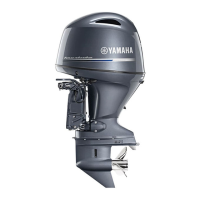Safety information
4
EMU33590
Laws and regulations
Know the marine laws and regulations where
you will be boating- and obey them. Several
sets of rules prevail according to geographic
location, but all are basically the same as the
International Rules of the Road. The rules
presented in the following section are con-
densed- and have been provided for your
convenience only.
Contact the U.S. Coast Guard, the National
Association of State Boating Law Administra-
tors, or your local Power Squadron for a com-
plete set of rules governing the waters in
which you will be using your boat.
EMU33682
Boating organizations
The following organizations provide boating
safety training and information about boating
safety and laws.
United States Coast Guard
Consumer Affairs Staff (G-BC)
Office of Boating, Public, and Consumer Af-
fairs
U.S. Coast Guard Headquarters
Washington, D.C. 20593-0001
http://www.uscgboating.org/
United States Power Squadrons
1-888-FOR-USPS (1-888-367-8777)
http://www.usps.org/
Boat Owners Association of The United
States
1-800-336-BOAT (1-800-336-2628)
http://www.boatus.com/
National Association of State Boating Law
Administrators (NASBLA)
1500 Leestown Road, Suite 330
Lexington, KY 40511 859-225-9497
http://www.nasbla.org/
National Marine Manufacturers Associa-
tion (NMMA)
200 East Randolph Drive
Suite 5100
Chicago, IL 60601
http://www.nmma.org/
Marine Retailers Association of America
155 N. Michigan Ave. Chicago,
IL 60304
http://www.mraa.com/
EMU33691
Basic boating rules (Rules of
the road)
Just as there are rules that apply when you
are driving on streets and highways, there are
waterway rules that apply when you are driv-
ing your boat. These rules are used interna-
tionally. (For U.S.A.: and are also enforced by
the United States Coast Guard and local
agencies.) You should be aware of these
rules, and follow them whenever you encoun-
ter another vessel on the water.
EMU33700
Steering and sailing rules and sound
signals
Whenever two vessels on the water meet one
another, one vessel has the right-of-way; it is
called the “stand-on” vessel. The vessel that
does not have the right-of-way is called the
“give-way” or “burdened”vessel. These rules
determine which vessel has the right-of-way,
and what each vessel should do.
Stand-on vessel
The vessel with the right-of-way has the duty
to continue its course and speed, except to
avoid an immediate collision. When you main-
tain your direction and speed, the other vessel
U63P1DE0.book Page 4 Tuesday, March 29, 2011 7:15 PM
©2019 Yamaha Motor Corporation, U.S.A.

